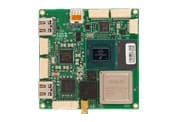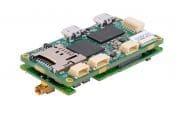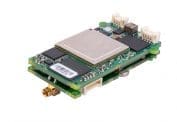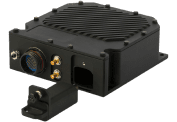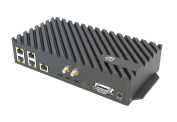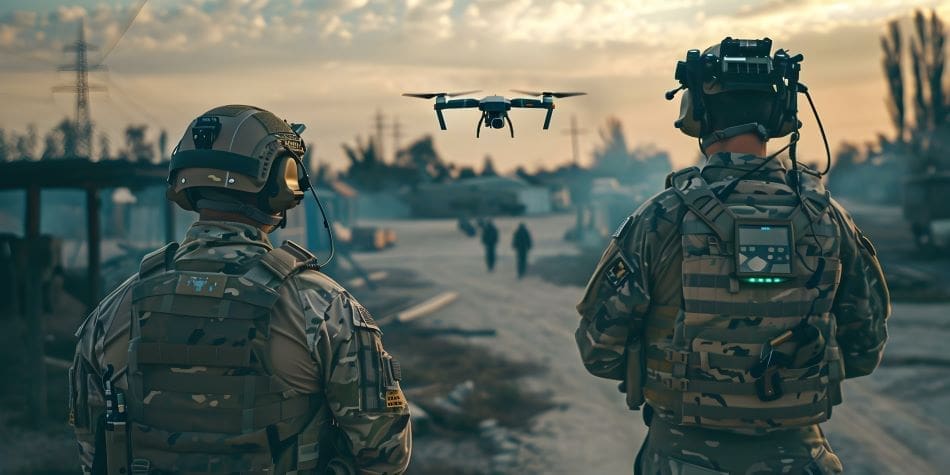Situational awareness in the military is the cornerstone of effective military and defense operations, enabling forces to make informed decisions in rapidly changing environments. This capability has never been more critical, as contemporary challenges demand an unprecedented level of strategic insight and operational flexibility. Maris-Tech delves into the situational awareness market, technological advancements, and future prospects of situational awareness systems within this vital sector.
What is Situational Awareness in the Military?
The essence of military situational awareness lies in the ability to perceive, comprehend, and anticipate developments in the operational environment accurately. It serves as the bedrock for decision-making processes, affecting everything from strategic planning to tactical execution. This is hugely significant in the defense domain, and some of the military situational awareness benefits include:
- Improved operational efficiency
- Reduced risks
- Better outcomes
Situational Awareness Market Insights: A Glimpse into the Present and Future
The market for situational awareness systems is on an upward trajectory, fueled by the increasing complexity of military engagements and the growing need for advanced surveillance, reconnaissance, and combat operations. Markets&Markets reports that the situational awareness market report size is projected to grow from $17.2 billion in 2020 to $21.8 billion by 2025, recording a CAGR of 4.9%. Mordor Intelligence underscores these findings, estimating that the situational awareness systems market will register a CAGR of over 4.5% during the forecast period (2021 – 2030), indicating robust expansion in this sector. This growth is propelled by situational awareness technology innovations and escalating demands for real-time data processing and analytics capabilities.
Key trends shaping the situational awareness systems market include the integration of machine learning (ML) and artificial intelligence (AI), the adoption of advanced sensor technologies, and the development of networked communication systems for seamless information sharing. In recent developments, the adoption of cloud computing and big data analytics has further enhanced the operational capabilities of situational awareness systems, enabling more efficient data management and analysis. These advancements are enhancing the ability of military and defense forces to operate more effectively in diverse and challenging environments.
Key players in the situational awareness market are General Electric (US), Lockheed Martin (US), Honeywell (US), DENSO (Japan), BAE Systems (UK), UTC (US), Microsoft (US), Barco (Belgium), AMD (US), L3Harris Technologies (US), General Dynamics (US), Xilinx (US), Qualcomm (US), Robert Bosch (Germany), Pleora Technologies (Canada), Nexvision (France), Bertin Instruments (France), Axis Communications (Sweden), Johnson Controls (Ireland), Boeing (US), Airbus (France, and Sensara (US).
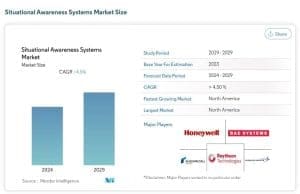
Source: https://www.mordorintelligence.com/industry-reports/situational-awareness-systems-market
Challenges and Opportunities for Situational Awareness Military Systems
While the potential of situational awareness systems is immense, the path forward is not without challenges. The integration of new technologies with existing platforms, cybersecurity concerns, and the need for interoperability among allied forces are significant hurdles to overcome. However, these challenges also present opportunities for innovation and collaboration among industry players, governmental agencies, and research institutions in advancing homeland security situational awareness as well as situational awareness in the military. In addition, the increasing focus on space situational awareness has emerged as a new frontier, necessitating advanced monitoring and analytical capabilities to ensure space asset safety and security.
Situational Awareness Technology and its Future
Looking ahead, the future of situational awareness in the military and defense sectors is poised for transformative changes, driven by rapid technological advancements. Emerging situational awareness military technology is set to revolutionize how armed forces interact with their environment, making operations more effective and responsive. Some examples:
Situational Awareness and Autonomous Vehicles
The deployment of unmanned aerial vehicles (UAVs) and autonomous underwater vehicles (AUVs) in surveillance missions is a prime example of this shift. UAVs have been extensively used for intelligence, surveillance, and reconnaissance (ISR) missions, providing real-time data and imagery without risking human lives. AUVs offer similar advantages in naval operations, capable of conducting underwater surveys and mine detection autonomously, enhancing naval situational awareness without direct human oversight.
AI Situational Awareness
A pivotal advancement in situational awareness is the integration of Edge AI with video analytics. This technology processes and analyzes video data directly on the device where it is captured, drastically reducing latency and bandwidth usage. Artificially intelligent situational awareness technology can be deployed on drones using edge AI to instantly identify and classify objects, movements, and patterns in the video feed. This enables immediate decision-making and response, such as identifying hostile threats or tracking the movement of targets in real time, without the need for data to be sent back to a central server for analysis.
Augmented Reality (AR)
AR technologies are revolutionizing operational visualization by overlaying critical information onto a soldier’s view of the real world. For instance, the Integrated Visual Augmentation System (IVAS) being developed for the U.S. Army by Microsoft, combines high-resolution night, thermal, and soldier-borne sensors into a heads-up display. This system offers real-time maps, enemy positions, and the locations of nearby units, significantly enhancing decision-making on the battlefield.
Predictive Analytics for Threat Assessment
The use of ML algorithms to analyze vast amounts of data from various sources can predict potential threats before they materialize. An example is the U.S. Department of Defense’s Project Maven, which aims to implement AI situational awareness systems that can sift through extensive drone and satellite imagery to identify threats, enabling proactive measures in conflict zones and improving the timeliness and accuracy of military responses.
Integration of 5G Technology
The rollout of 5G networks promises to dramatically improve communication speed and reliability for military operations. With its high data rate and reduced latency, 5G enables a new level of real-time information sharing and coordination. For example, it can facilitate the instant transmission of high-definition video feeds from UAVs to command centers, ensuring that decision-makers have access to the most current operational picture. In addition, 5G’s capacity for supporting a massive number of connected devices simultaneously is critical for the Internet of Battlefield Things (IoBT), where sensors, wearables, and other IoT devices on the battlefield are interconnected, providing comprehensive situational awareness.
Situational Awareness in the Military: Concluding Thoughts
As situational awareness in the military continues to evolve, the military and defense sectors stand at the precipice of a new era of operational capability and strategic foresight. The ongoing developments in situational awareness technology and the shifting dynamics of global security necessitate a continued focus on enhancing situational awareness capabilities. Embracing these changes and overcoming associated challenges will be crucial for maintaining a competitive edge and ensuring the safety and effectiveness of military defense operations in the years to come. For more information on current situational awareness technologies in the video streaming sector, contact Maris-Tech.

